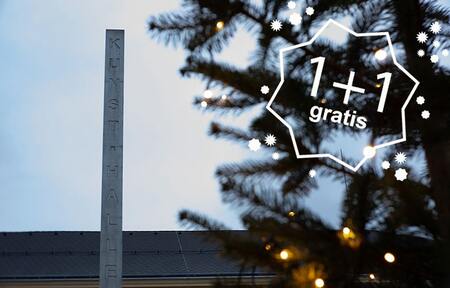
Museumsplatz 5
3500 Krems an der Donau
Austria
Kunsthalle Krems
With its trend-setting, monographic presentations as well as excellent thematic general exhibitions covering the exciting fields of 19th century art, classical modernism and contemporary art by national and international artists, the Kunsthalle Krems museum, one of Lower Austria’s international exhibition centers, has been an impressive force for more than 20 years. The Kunsthalle Krems has an extensive art education program and provides an open-minded setting for passing on information and an enthusiasm for art.
Kunsthalle Krems’ history dates back to 1992, when exhibition projects were first realized at the Krems Minorite Church under the direction of the founding director Wolfgang Denk. At the same time the decision was made to use the former tobacco factory building (built in 1852) for this purpose. Superbly located in front of Krems’ Old Town Steiner Gate, with views of the Danube, the Kunsthalle boasts a 1.400 m2 exhibition area. The architect Adolf Krischanitz was commissioned to renovate and convert the tobacco factory. The tobacco factory’s original structure was extended from 1994 to 1995 to also have a new exhibition hall.
The Kunsthalle Krems was opened to the public by the founding director Wolfgang Denk on March 31st, 1995. The new building’s first exhibition was curated by the renowned art historian Werner Hofmann: In May of that same year "Wasser & Wein" (“Water & Wine”) was opened. The Kunsthalle Krems, thereby, was an ambitious project at the beginning of an exemplary museum boom and ultimately contributed to the present density of museums and exhibition halls in Austria. Carl Aigner, who had previously worked as a curator of important photo exhibitions at the Kunsthalle Krems, succeeded as director to Wolfgang Denk in 1997. The following director, Tayfun Belgin, had had curatorial experience dating back to 2001. Responsible for numerous successful exhibitions before his appointment in November 2003 - especially concerning 19th century art - his maxim "Telling stories" not only greatly influenced future program planning, but also impacted the exhibition "Renoir and the Impressionism of women," whose soft opening on March 31st, 2005 also acted as Kunsthalle Krems’ 10-year anniversary festivities. Following the success of "Harem - Mystery of the Orient", Belgin continued the Kunsthalle’s successes in 2006 with the exhibitions "Triumph of beauty. Epoch of salon paintings from Makart to Rosetti" and "The Hungarian soul. Realism in the land of the Magyars". January 2008 saw Dieter Buchhart succeed as the Kunsthalle Krems’ new director. He promised to continue his predecessor’s high quality realization of the thematic foci, but also paid increased attention to the period of classical modernism of the 19th century up until present-day contemporary art.
Hans-Peter Wipplinger was at Kunstmeile Krems' helm from January 2009 to September 2015. After studying at the University of Vienna, he worked at the O.K Center for Contemporary Art in Linz, at the New Museum of Contemporary Art in New York and was director of the Museum of Modern Art Passau for four years. His central task comprised creating strong profiles and programs for the Kunsthalle Krems’ exhibition halls, and communicating these to both a specialist audience and to the general public.
Florian Steininger took over the Kunsthalle Krems’ artistic direction in July 2016. After finishing his art history studies at the University of Vienna he worked for the newspaper Die Presse, the Sammlung Essl museum and the Bank Austria Kunstforum museum. From 2001 on, he worked there as a curator and was responsible for numerous group exhibitions and staff, including Willem de Kooning (2005) and Frida Kahlo – Retrospective (2010). He has been the collection director of the Swiss private collection Hubert Looser (Zurich) since 2015, which focuses on classical modernism, abstract expressionism and minimal art.
Since 2016 Florian Steininger continues to manage the Kunsthalle Krems as its artistic director, maintaining it as an international exhibition center for contemporary art in Lower Austria. The program is inspired by art since 1945 and has an emphasis on contemporary art.